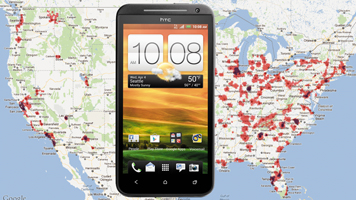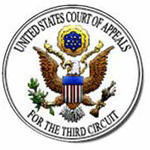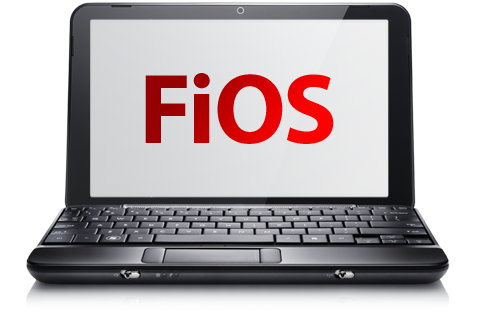|
|
In this edition of Views and News, we highlight the release of a new ETI Report: "Handset Interoperability: Increasing 4G competition in the Lower 700 MHz band" -- prepared on behalf of US Cellular. We are pleased to report that the US Court of Appeals for the Third Circuit relied upon ETI testimony in its ruling overturning a class action settlement agreement alleged to be unfair to consumers. Finally, we examine Verizon's strategy for increasing FiOS revenues--raising prices in the face of dwindling growth.
Read on below, or navigate over to
econtech.com
where you can read online, or download a
printer-friendly version.
|
|
New ETI Report examines "Handset Interoperability: Increasing 4G competition in the Lower 700 MHz band"
|
|
 The burgeoning demand for wireless data services, driven by the proliferation of "smartphones" and other wireless devices capable of Internet access, has compelled the FCC to reallocate electromagnetic spectrum away from various other uses and over to Commercial Mobile Radio Service (CMRS). As part of the overall conversion to digital television (DTV), the Commission ordered that all UHF TV spectrum above Channel 51 be reallocated to other uses, and required that holders of TV station licenses in those bands be shifted to lower frequencies. The 700 MHz spectrum (698-806 MHz) had been used for UHF TV channels 52 through 68. The "Lower 700 MHz band" (698-768 MHz) was divided into five "blocks," designated A through E, three of which (A, B and C) were earmarked for two-way CMRS use. In January 2008, the FCC began spectrum Auction 73 to sell these repurposed airwaves to CMRS carriers. 700 MHz offers superior propagation characteristics, which make these new licences particularly valuable and well-suited for the provision of 4G LTE services. All of the early major LTE launches (e.g., Verizon, AT&T, US Cellular) have used the 700 MHz spectrum that had been acquired in Auction 73.
The burgeoning demand for wireless data services, driven by the proliferation of "smartphones" and other wireless devices capable of Internet access, has compelled the FCC to reallocate electromagnetic spectrum away from various other uses and over to Commercial Mobile Radio Service (CMRS). As part of the overall conversion to digital television (DTV), the Commission ordered that all UHF TV spectrum above Channel 51 be reallocated to other uses, and required that holders of TV station licenses in those bands be shifted to lower frequencies. The 700 MHz spectrum (698-806 MHz) had been used for UHF TV channels 52 through 68. The "Lower 700 MHz band" (698-768 MHz) was divided into five "blocks," designated A through E, three of which (A, B and C) were earmarked for two-way CMRS use. In January 2008, the FCC began spectrum Auction 73 to sell these repurposed airwaves to CMRS carriers. 700 MHz offers superior propagation characteristics, which make these new licences particularly valuable and well-suited for the provision of 4G LTE services. All of the early major LTE launches (e.g., Verizon, AT&T, US Cellular) have used the 700 MHz spectrum that had been acquired in Auction 73.
Handsets capable of using all three of the Lower 700 MHz blocks – A, B and C – were designated as "Band Class 12" by the 3GPP, the international standards body for the wireless industry. The 3GPP standards specified interoperability across the entirety of each band class; i.e., a handset manufactured to Band Class 12 specifications would function on any of the three Lower 700 MHz blocks, A, B or C. These specifications were in place at the time of the FCC's Auction 73 for 700 MHz spectrum.
Shortly after Auction 73 had been completed, certain wireless carriers (principally AT&T), now holding B and C Block licenses, began arguing that the proximity of the A Block to DTV Channel 51 and to the E Block created unacceptable interference in the A Block, and that such interference will bleed into the B and C Blocks when equipment capable of operating on all three Blocks is used. They claimed that limiting handsets to only the B and C Blocks eliminates such interference. Advocates of this position petitioned the 3GPP to create a new handset standard, "Band Class 17," that allows for operation on only Blocks B and C. Band Class 17 handsets cannot operate in the A Block, and AT&T does not permit the use of Band Class 12 handsets on its network. As a result, customers of the A Block licensees – mainly small and regional wireless carriers – would be unable to use their Band Class 12 handsets to roam on the geographically expansive B and C block licensees' networks; this lack of full interoperability across all three Lower 700 MHz blocks, thus degrades the functionality of the A block licensees' services. These carriers argue that the claimed interference affecting the A Block from the adjacent DTV and broadcast spectrum, if and to the extent it actually exists, does not justify AT&T's policy of denying interoperability with Band Class 12 handsets, and has asked the FCC to require full interoperability among all Lower 700 MHz devices.
Continue reading at econtech.com
|
|
Third Circuit Court of Appeals relies upon ETI testimony in overturning Sprint ETF settlement agreement
|
|
 On June 29, 2012, the United States Court of Appeals for the Third Circuit vacated a 2008 class action settlement reached with Sprint Nextel over its practice of charging flat rate early termination fees (ETFs). The Third Circuit Court relied upon the testimony of ETI Vice President Colin B. Weir in reaching its decision. In reversing the settlement's approval, the three-judge panel found that the lower court had failed to act in the best interest of potential plaintiffs when it decided that it would be unreasonable for Sprint to conduct a search of its electronic billing records that Sprint admitted could identify more than 4-million class members.
On June 29, 2012, the United States Court of Appeals for the Third Circuit vacated a 2008 class action settlement reached with Sprint Nextel over its practice of charging flat rate early termination fees (ETFs). The Third Circuit Court relied upon the testimony of ETI Vice President Colin B. Weir in reaching its decision. In reversing the settlement's approval, the three-judge panel found that the lower court had failed to act in the best interest of potential plaintiffs when it decided that it would be unreasonable for Sprint to conduct a search of its electronic billing records that Sprint admitted could identify more than 4-million class members.
Continue reading at econtech.com
|
|
With FiOS growth nearing its end, Verizon turns to harvesting what it has sown
|
|
 Back in May of 2004, Verizon announced an ambitious plan to deploy a fiber-to-the-home (FTTH) infrastructure under its FiOS brand name. Ultimately, Verizon aimed to deploy its FiOS service to some 42-million customers across its (then) 28-state (plus the District of Columbia) footprint. In all, some 60% of Verizon's 70-million residence customers were to have access to FiOS. A lot has changed since those lofty announcements.
Back in May of 2004, Verizon announced an ambitious plan to deploy a fiber-to-the-home (FTTH) infrastructure under its FiOS brand name. Ultimately, Verizon aimed to deploy its FiOS service to some 42-million customers across its (then) 28-state (plus the District of Columbia) footprint. In all, some 60% of Verizon's 70-million residence customers were to have access to FiOS. A lot has changed since those lofty announcements.
Continue reading at econtech.com
|
|
|
|
About ETI. Founded in 1972, Economics and Technology, Inc. is a leading research and consulting firm specializing in telecommunications regulation and policy, litigation support, taxation, service procurement, and negotiation. ETI serves a wide range of telecom industry stakeholders in the US and abroad, including telecommunications carriers, attorneys and their clients, consumer advocates, state and local governments, regulatory agencies, and large corporate, institutional and government purchasers of telecom services. |
|
|